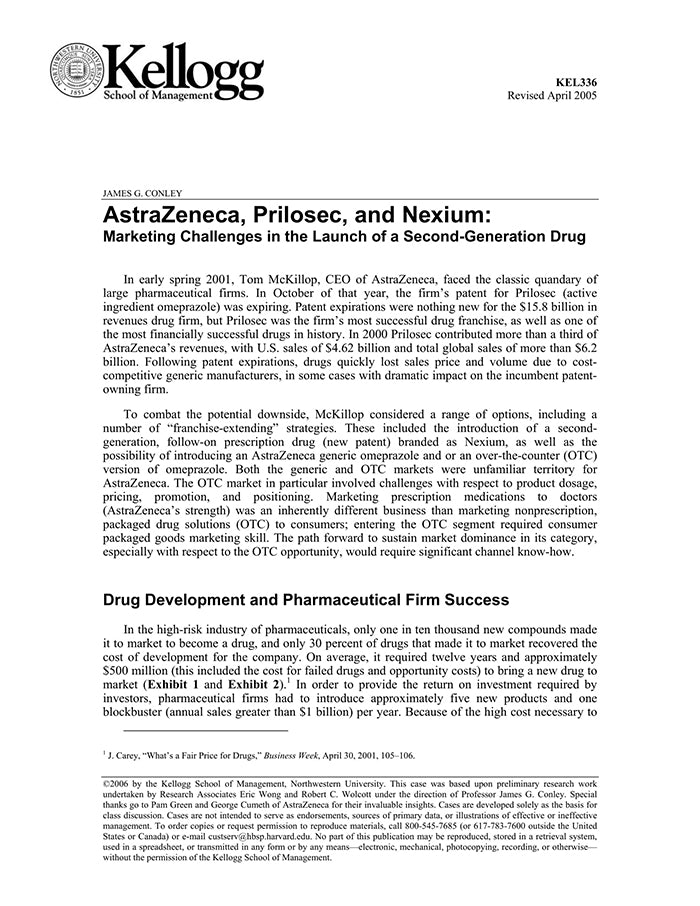AstraZeneca, Prilosec, and Nexium: Marketing Challenges in the Launch of a Second-Generation Drug
受取状況を読み込めませんでした
Tom McKillop, CEO of AstraZeneca, faced the classic quandary of large pharmaceutical firms. The firm's patent for Prilosec (active ingredient omeprazole) was expiring. Severe cost-based competition from generic drug manufacturers was inevitable. Patent expirations were nothing new for the US$15.8 billion in revenues drug firm, but Prilosec was the firm's most successful drug franchise, with global sales of US$6.2 billion. How could the company innovate its way around the generic cost-based competition and avoid the drop in revenues associated with generic drug market entry? AstraZeneca had other follow-on drugs in the pipeline--namely Nexium, an improvement on the original Prilosec molecule. Additionally, the company had the opportunity to introduce its own version of generic omeprazole, hence becoming the first mover in the generic segment, and/or introduce an OTC version of omeprazole that might tap into other markets. Ideally, AstraZeneca would like to move brand-loyal Prilosec customers to Nexium. In this market, direct-to-consumer advertising has remarkable efficacy. Classical marketing challenges of pricing and promotion need to be resolved for the Nexium launch as well as possible product and place challenges for the generic or OTC opportunity. Which combination of marketing options will allow the firm to best sustain the value of the original omeprazole innovation?
【書誌情報】
ページ数:20ページ
サイズ:A4
商品番号:HBSP-KEL336
発行日:2006/1/1
登録日:2008/12/18


